Connecticut is a picturesque state in the northeastern corner of America. It has New York to its west, Rhode Island and Massachusetts to the north, and Long Island Sound southward. Rolling hills, verdant forests, and breathtaking coastal sites make Connecticut an iconic destination for sightseers – from Yale University’s hallowed halls to Mystic Seaport Museum’s maritime history lessons at Gillette Castle State Park.
In this detailed guide, we will take a look at what to hunt in Connecticut, where the best places to hunt game in The Constitution State are, hunting seasons, and hunting license information.
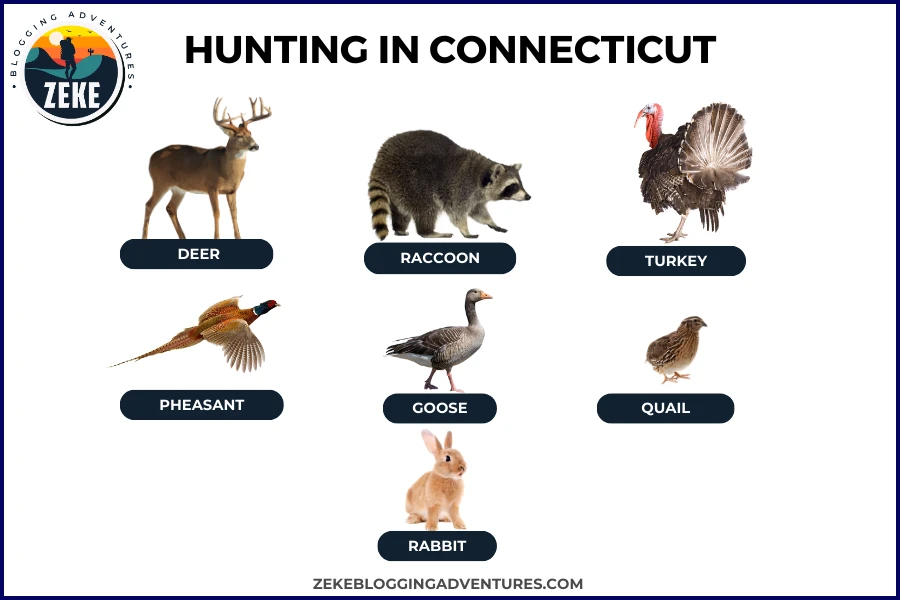
What Can You Hunt in Connecticut?
Hunting is a popular pastime in Connecticut, with a variety of game animals like white-tailed deer, wild turkey, pheasant, and more available for the taking. Whether you’re looking to bag some ducks or chase down coyotes and foxes, you’ll need to get your hands on the appropriate licenses before heading out into the woods. Depending on the type of animal you are hunting, you may also need additional permits or tags.
Hunting is allowed in most areas of the state, although some areas are closed to hunting due to safety concerns. The state offers various hunting seasons throughout the year for different species.
White-tailed deer season typically runs from late September through December. Wild turkey season usually runs from April through May. Please note that bear hunting is not allowed in Connecticut.
Deer
Connecticut’s deer population is booming, due to the state’s strict management which includes limits on harvest and antler restrictions. The season typically runs from mid-September through early December with archery kicking off in late August. You can spot these majestic creatures in wooded areas as well as open fields throughout Connecticut.
Still-hunting is a popular hunting method used here; it involves carefully walking through the woods while looking for signs of deer activity like tracks or droppings. Spot-and-stalk techniques are also useful when trying to locate and take down a buck or doe.
Muzzleloaders, bows, and crossbows (at certain times) are all allowed during specific seasons so you have multiple options when it comes to weapons selection – just make sure you’re aware of any regulations that may apply.
If large game such as elk or moose is your thing, then head over to one of several designated spots where they can be hunted safely within the state boundaries.
Deer Season in Connecticut
| Season | Dates | Zone |
| Bowhunting Season | 01 Jan – 31 Jan | Private Land (Zones 11 & 12) |
| Bowhunting Season | 15 Sep – 31 Dec | Private Land (All Zones) |
| Bowhunting | 15 Sep – 30 Dec | State Land (Bowhunting only areas) |
| Bowhunting | 15 Sep – 14 Nov, 20 Dec – 30 Dec | State Land |
| Shotgun Season | 15 Nov – 05 Dec | No Lottery Season |
| Muzzleloader Season | 06 Dec – 19 Dec | State Land |
| Muzzleloader Season | 06 Dec – 30 Dec | Private Land |
| Shotgun/Rifle Season | 15 Nov – 05 Dec | Private Land |
| Shotgun/Rifle Season | 01 Nov – 30 Dec | Landowner |
| Deer Lottery (Archery) | 15 Sep – 30 Dec | ——- |
| Deer Lottery ”A” Season | 15 Nov – 24 Nov | State Land |
| Deer Lottery Regular Season | 15 Nov – 05 Dec | State Land |
Turkey
The spring and fall seasons are the perfect times to go turkey hunting in Connecticut. During these months, hunters can take advantage of the plentiful birds available by using various calling, decoying, or still-hunting techniques.
Calling is a great way to bring turkeys into range during the spring season. Box calls and mouth calls imitate the sound of a female turkey hen which attracts them closer for an easier shot.
Decoys also help lure turkeys in; realistic-looking ones make it seem like there’s another bird nearby so they come closer for a better look – then a better shot.
Also, still-hunting involves slowly walking through an area while searching for birds before attempting to get close enough without startling them away.
Before heading out on your next hunt, remember that you need to know all local regulations and have proper permits if necessary – otherwise, you could be fined.
Turkey Season Connecticut
| Season | Dates |
| Spring (All Lands) | 26 Apr – 27 May |
| Fall Archery (All State Lands 1) | 15 Sep – 14 Nov |
| Fall Archery (State Land Only) | 15 Sep – 30 Dec |
| Fall Archery (Private Land Only: All Zones) | 15 Sep – 30 Dec |
| Fall Archery (All State land 2) | 20 Dec – 30 Dec |
| Late Fall Archery (Private Land Only: Zone 11 & 12) | 02 Jan – 31 Jan |
| Late Fall Archery (Private Land) | 02 Jan – 31 Jan |
| Fall Firearms (All Lands) | 07 Oct – 31 Oct |
Pheasant
Hunting pheasants in Connecticut is a great way to get outdoors and explore the thrill of the chase. With diverse habitats, from marshy coasts to hilly terrain, there are plenty of spots for aspiring hunters. The DEEP (Connecticut Department of Energy and Environmental Protection) stocks birds throughout the state so access to prime hunting grounds isn’t an issue!
To make sure your hunt is successful, it’s important to scout beforehand – look out for areas with dense vegetation like tall grasses or bushy fields where they can hide and feed as well as wide open spaces that allow them quick escape when disturbed. It also helps if you take note of wind direction; this can give you an edge during your hunt.
Pheasant season in Connecticut runs twice a year: October 1st through November 30th then December 15th through January 31st. During these times, any hunter must have both a valid small game license and HIP certification on hand at all times while abiding by local bag limits or other restrictions set by authorities. So get ready – grab your shotgun – let’s go bag some birds.
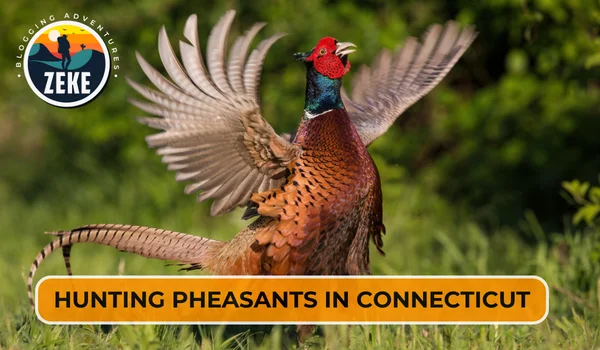
Pheasant Hunting Season Connecticut
| Species | Dates |
| Pheasant | 21 Oct – 30 Dec, 02 Jan – 28 Feb |
Goose
Connecticut is a great place for waterfowl hunting, with an abundance of geese that migrate through the area each year. The diverse landscape and habitats offer countless options when it comes to finding the perfect spot to hunt these birds.
Amongst them are Canada Geese, Snow Geese, White-fronted Geese, and Brant – all requiring skillful strategies due to their size and speed.
For those seeking success in hunting them, there are several methods that can come into play depending on preference; decoying is one popular option where hunters set up decoys around fields or ponds in order to lure geese within range as they wait patiently for a shot.
Alternatively using blinds provides cover while getting close enough for desired results. No matter what method you choose Connecticut offers some of the best opportunities for goose hunting.
Goose Season
| Season | Dates | Bag Limit |
| Early Canada Goose South Zone | 15 Sep – 30 Sep | 15 per day |
| Early Canada Goose North Zone | 01 Sep – 30 Sep | 15 per day |
| Early Snow Goose South Zone | 01 Oct – 30 Nov | 25 per day |
| Early Snow Goose North Zone | 01 Oct – 14 Jan | 25 per day |
| North & South Zone | 08 Oct – 15 Oct | 5 per day |
| North Zone Only | 10 Oct – 15 Oct | 2 Canada Geese per day |
| North & South Zone | 11 Nov – 07 Dec | 5 per day |
| North & South Zone | 11 Nov – 11 Jan | 2 per day |
| North & South Zone | 21 Dec – 15 Feb | 5 per day |
| Late Canada Goose South Zone | 16 Jan – 15 Feb | 5 per day |
| Late Snow Goose South Zone | 06 Jan – 10 Mar | 25 per day |
| Late Snow Goose North Zone | 21 Feb – 10 Mar | 25 per day |
Quail
Hunting quail in The Constitution State is a great way to enjoy the outdoors and get some fresh air. Late fall and early winter are the optimal times for this activity, when foliage has died back making it easier to spot quail.
You’ll want to make sure you dress appropriately depending on weather conditions, as well as bring binoculars or a spotting scope along with your shotgun or rifle, ammunition, decoys, and calls.
Make sure that you adhere to all local regulations including possessing a valid hunting license and following bag limits set by the state. Staying alert is key; these birds move around often so always keep an eye out!
With upland and wetland habitats available, there’s no shortage of spots that will suit any style of hunter – just choose one that suits your needs best.
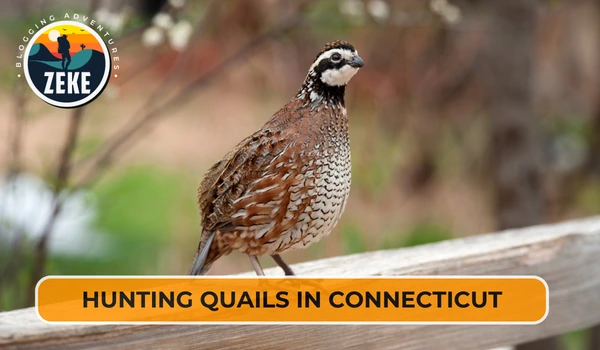
Quail Season in Connecticut
| Species | Dates |
| Quail | 21 Oct – 04 Nov |
Rabbit
When hunting rabbits in Connecticut, it’s essential to be aware of the laws and regulations that govern the activity. There are set seasons for when you can hunt them, as well as limits on how many rabbits can be taken each day. Make sure your firearms or archery equipment is legal for use in this state before heading out into the field.
Rabbits tend to be most active during dawn and dusk so plan your hunt accordingly. When scouting their habitats—which include open fields, woodlands, wetlands, and even urban areas—look for signs such as tracks, droppings, and trails they leave behind while moving around. As they prefer thick vegetation where they can hide from predators, focus your search there too.
Once you spot a rabbit, approach slowly but keep quiet; sudden movements could startle it away before you have a chance to take aim. If using firearms always ensure there’s a safe backstop in place so that any stray bullets won’t harm people or property nearby. With some patience and practice, soon enough you’ll make successful shots at these furry critters.
Rabbit Season Connecticut
| Species | Dates |
| European Hare | 21 Oct – 30 Dec |
| Cottontail | 02 Jan – 28 Feb |
| Snowshoe Hare | 18 Nov – 30 Dec, 02 Jan – 31 Jan |
Raccoon
Connecticut is a great spot for hunting raccoons with its abundant natural habitat. To find these critters, scour wooded areas for signs of their presence: tracks, droppings, and dens.
Hunting season runs from October 1st to March 31st; you can take two per day and ten in total during this period – just make sure you have a valid license beforehand.
When it comes to equipment, pack your rifle or shotgun loaded with slugs or buckshot ammo plus a quality flashlight if you plan on night-time hunts (where they’re most active). Binoculars, calls, decoys, and scent attractants are also handy tools that will help increase your chances of success when tracking down these clever creatures.
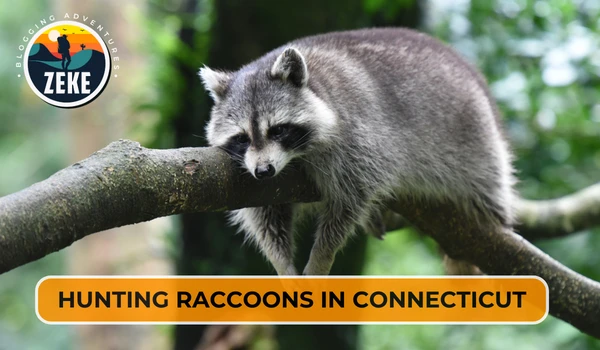
Raccoon Season
| Species | Dates |
| Raccoon | 02 Jan – 30 Dec |
Opossum Season
| Species | Dates |
| Opossum | 21 Oct – 30 Dec |
Coyote Season
| Species | Dates |
| Coyote | 02 Nov – 30 Dec |
Fox Season
| Species | Dates |
| Gray and Red Fox | 02 Jan -28 Feb, 21 Oct – 30 Dec (3 per day combined) |
Grouse Season
| Species | Dates |
| Ruffed Grouse | 21 Oct – 30 Nov |
Woodchuck Season
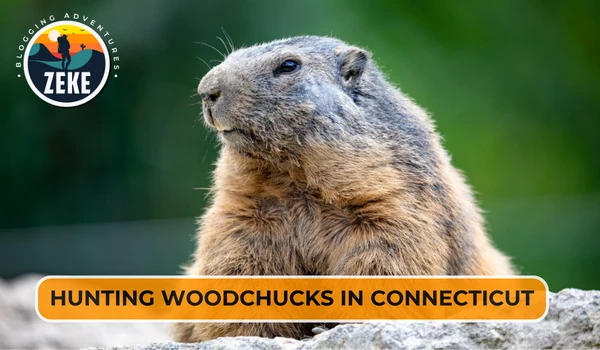
| Species | Dates |
| Woodchuck | 15 Mar – 15 Nov |
Crow Season
| Species | Dates |
| Crow | 14 Jan – 15 Mar |
| Crow | 12 Aug – 13 Oct |
| Crow | 21 Oct – 03 Nov |
Squirrel Season
| Species | Dates |
| Squirrel | 21 Oct – 04 Nov |
Crow Season
| Species | Dates |
| Crow | 14 Jan – 15 Mar |
| Crow | 12 Aug – 13 Oct |
| Crow | 21 Oct – 03 Nov |
Duck Season
| Zone | Dates | Bag Limit |
| Scaup South Zone 01 | 08 Oct – 12 Oct | 1 per day |
| Scaup North Zone 01 | 08 Oct – 15 Oct | 1 per day |
| Early South Zone | 08 Oct – 12 Oct | 6 per day |
| Early North Zone | 08 Oct – 15 Oct | 6 per day |
| Scaup South Zone 02 | 18 Nov – 29 Dec | 1 per day |
| Scaup North Zone 02 | 11 Nov – 17 Dec | 1 per day |
| Late North Zone | 11 Nov – 11 Jan | 6 per day |
| Late South Zone | 18 Nov – 21 Jan | 6 per day |
| Scaup South Zone 03 | 30 Dec – 21 Jan | 2 per day |
| Scaup North Zone 03 | 20 Dec – 11 Jan | 2 per day |
Connecticut Hunting License Information
Hunting in Connecticut is an exciting adventure that requires a valid hunting license for anyone of any age or residency status. To begin the process, all first-time hunters must complete an approved hunter safety course to ensure they understand proper firearms safety and conservation practices.
After completing the course and obtaining your certificate, you’re ready to apply for your Connecticut hunting license online or at any authorized agent location.
When applying online, make sure to have proof of identity (like a driver’s license) and proof of residence (such as a utility bill); then pay the required fee according to what type of license you need.
As a hunter, it’s essential to abide by all state regulations and laws when out in the wild. Make sure you carry your valid hunting license at all times; otherwise, you’ll have to face fines or other penalties from local authorities.
In addition to common hunting permits available in CT, there are also special permits for activities like bowhunting and muzzleloader hunting that require extra documentation upon application.
For instance, if applying for a bowhunting permit, proof of completion of an archery-approved hunter education program must be provided.
It is important to note that hunters should always remain aware and diligent about game species and seasons while they are out on their hunts – failure could lead them into trouble with the law.
Where Can You Hunt in Connecticut?
The state of Connecticut offers a range of wildlife management areas that provide access to thousands of acres of prime deer habitat, as well as opportunities for waterfowl hunting with ducks, geese, and swans.
Popular WMAs include Natchaug State Forest, Pachaug State Forest, and Moosup Valley State Park – all open to the public with both archery and firearms seasons available.
Small game hunters can also find suitable terrain on private land leases or at various other Wildlife Management Areas (WMAs).
Let’s take a look at some of the best places for hunting in Connecticut.
Public Places to Hunt in Connecticut
Pachaug State Forest
Pachaug State Forest is an ideal hunting spot for those who want to take advantage of the wide range of wildlife in the area. Located in eastern Connecticut, Pachaug offers a variety of opportunities with deer, turkey, small game and waterfowl available to hunt.
With over 8,000 acres at your disposal and multiple access points throughout the forest, you’ll easily find a space that’s perfect for your needs.
The terrain here varies greatly – from hardwood forests with some coniferous trees mixed in to open fields and wetlands – providing plenty of options when it comes to choosing where you’d like to set up camp.
Deer are particularly abundant due its plentiful food sources while turkey hunters can enjoy many roosting spots scattered across the woods.
Bennett’s Pond State Park
Hunting is a great way to experience the wild outdoors and take advantage of Bennett’s Pond State Park’s vast wildlife. With 4,000 acres of land teeming with game such as deer, turkey, squirrels, rabbits, and quail – not to mention smaller critters like raccoons and foxes – there are plenty of opportunities for hunters.
Varied terrain including hardwood forests, wetlands, open fields, and ponds offer diverse habitats for different species while also hosting migrating birds during certain seasons.
The park has numerous access points which make it easy for hunters to move around in search of their desired quarry. Overnight stays can be arranged at designated areas where campers or vehicles may stay if they plan on being out longer than one day.
To ensure an enjoyable hunting trip that is both safe and responsible in Bennett’s Pond State Park, always remember to wear blaze orange clothing when out in the field along with practicing all necessary gun safety measures.
Mohegan State Forest
Situated in the center of Connecticut, Mohegan State Forest is an idyllic spot for hunters and anglers. Its rolling hills provide plenty of cover for white-tailed deer, wild turkey, and black bear to roam freely. The terrain varies from open fields perfect for stalking prey to dense woodlands full of acorns they love to snack on during the fall months.
On top of that, there are numerous water sources located throughout the forest where one can find ducks or fish trout and bass around lakes and ponds chock-full with panfish like bluegill and crappie. Whether you’re looking to hunt game or catch a few dinner treats – Mohegan State Forest has it all!
Bigelow Hollow State Park
Hunting in Bigelow Hollow State Park is an incredible way to connect with nature and take advantage of some of the best hunting spots Connecticut has to offer. The park boasts a huge variety of game, such as deer, turkey, and waterfowl. With over two thousand acres of forestland for hunters to explore, there’s plenty of space available for everyone.
The land at Bigelow Hollow ranges from open flatlands up into rolling hills and valleys; giving hunters access to a diverse range of terrain where they can hunt their prey. There are also many streams and wetlands scattered throughout that provide excellent habitats for wildlife alike.
Bigelow Hollow is open year-round but special regulations apply during certain times like deer season when only shotguns or muzzleloaders may be used while hunting them down. Other activities such as fishing, camping, hiking, biking, or bird watching are all welcome too.
Moosup Valley State Park
Moosup Valley State Park is an ideal location for hunters of all ages and skill levels. At over 1,500 acres, this Connecticut gem offers plenty of land to explore with a variety of game species including deer, turkey, and waterfowl. With its diverse terrain consisting of wetlands, woodlands, and open fields it’s the perfect spot to up your hunting game.
Deer are abundant in both wooded areas as well as open fields while turkey can be hunted using archery or firearms equipment – making sure you make the most out of your hunt.
Waterfowl present a great challenge for more experienced duck hunters who will find their prey in the park’s wetlands – offering excitement throughout every season.
For those looking beyond Moosup Valley State Park boundaries, there’s still plenty here too; Natchaug State Forest is popular among deer hunters while Quinebaug River Wildlife Management Area provides excellent opportunities for waterfowlers alike. Not to mention private hunting clubs nearby that offer access to their lands – giving even more chances at success on your next outing.
Private Hunting Places in Connecticut
Hunting on private lands in Connecticut is a great way to experience the outdoors and take advantage of some of the best hunting opportunities available. Before you hit the field, however, it’s important to know all the rules and regulations that apply – here’s what you need to be aware of.
First off, make sure you get written (or verbal) permission from any landowner before hunting on their property. This should include understanding any restrictions they may have set for hunters using their land.
Then, ensure that your license and required permits are up-to-date so as not to break any laws while out in nature. Also, remember where public boundaries end when hunting on private grounds – trespassing is illegal.
Always prioritize safety by wearing bright colors so others can easily identify you as a hunter; keep guns unloaded until ready to shoot; never point at people or animals when loading/unloading.
By following these guidelines closely and keeping an eye out for local restrictions or special requirements – like nearby roads or buildings that might be off-limits due to safety reasons–you can enjoy a safe yet memorable outdoor adventure while hunting in Connecticut.
